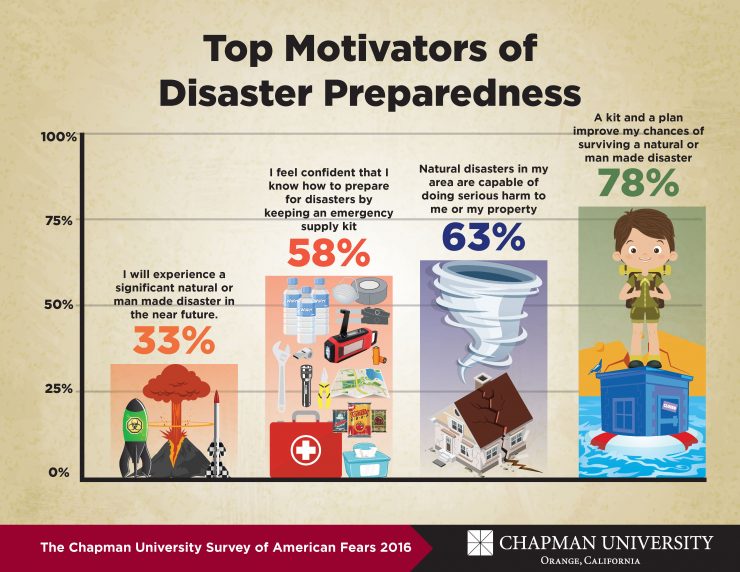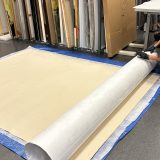Motivating Disaster Preparedness
October 11, 2016
More than half of all Americans (63%) believe that “Natural disasters in my area are capable of doing serious harm to me or my property.” The vast majority (78%) believe an emergency supply kit, such as a 72 hour kit recommended by FEMA and the Red Cross would improve their chances of surviving a disaster. Some 44% of Americans told us they sometimes feel guilty they have not done more to prepare for disasters. Nevertheless, 74% have made no effort to put together such a kit. And 68% of Americans do not have a household emergency plan. How can we motivate the public to prepare?
The Chapman Survey of American Fears identified factors that motivate preparedness and lead people to take action, such as making a family emergency plan or a 72 hour kit. Telling the public to prepare for disaster is an inherently scary message. When confronted with such information, members of the public can respond by trying to control the feeling of fear itself. Convincing oneself that “this can’t happen to me” or just not wanting to think about it is a way of suppressing the uncomfortable feeling of fear. A second reaction to fear is to control the danger or take action, such as preparing a plan and a kit. There are four factors that are essential components for motivating preparedness.
- Perceived Susceptibility – this can happen to me
- Perceived Severity- this is serious
- Self-efficacy- I can actually do something to help myself
- Response efficacy- the recommended action would make a difference
To measure the impact of these factors on disaster preparedness, we asked whether respondents believe “I will experience a significant natural or manmade disaster in the near future.” This measured their feelings of susceptibility. To gauge belief about severity, we asked if, “Natural disasters in my area are capable of doing serious harm to me or my property.” To measure self-efficacy, we asked whether the respondent feels, “…confident that I know how to prepare for disasters.” Finally, we looked at response efficacy by looking at whether Americans believe that, “By keeping an emergency supply kit, I am improving my chances of surviving a natural or manmade disaster.” Using logistic regression, we found that each of this factors contributed significantly to the likelihood of preparing for disaster with a 72 hour kit and household emergency plan. When communicating with the public about the importance of disaster preparedness, it is vital that the message emphasize susceptibility, severity and most importantly self-efficacy and response efficacy. Without these components, the message is likely to cause fear without action.
Top Motivators of Disaster Preparedness % Agree
I will experience a significant natural or man made disaster in the near future. 33%
Natural disasters in my area are capable of doing serious harm to me or my property 63%
I feel confident that I know how to prepare for disasters 58%
By keeping an emergency supply kit, I am improving my chance of surviving a natural or man made disaster 78%


